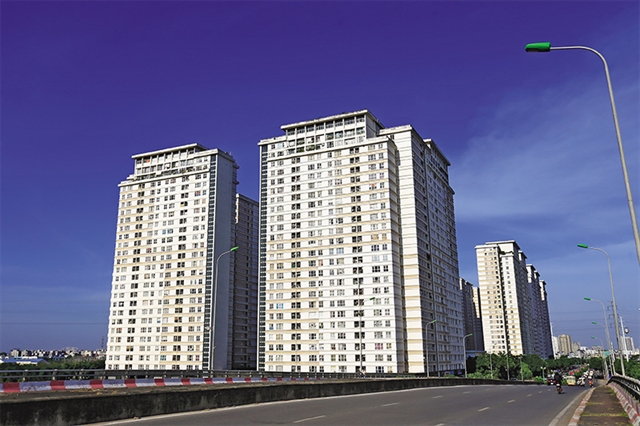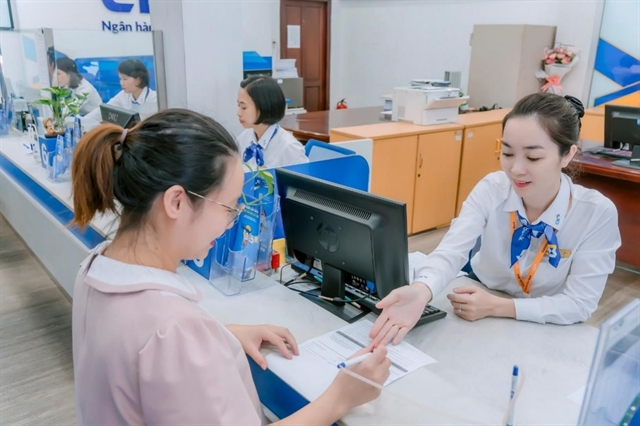 Economy
Economy

 |
| Bank staff introduces consumption lending products to customers. Personal consumer credit no longer has much room for development as in the previous time. Photo tinnhanhchungkhoan.vn |
HÀ NỘI — Although banks are always interested in retail credit due to its high profitability, this lending segment is currently under great pressure as capital demand from individual customers remain sluggish.
According to experts, retail banks have recently lost momentum in their core credit segment, with the proportion of personal loans decreasing sharply.
Lê Hoài Ân, a lecturer at HCM City Banking University, noted that lending by retail banks has fallen to its lowest level in the past five years, dropping from nearly 65 per cent in 2022 to 58.7 per cent in the first half of 2024.
Fluctuations in the loan portfolio structure of certain retail banks indicate that personal consumer credit no longer has as much room for growth as it once did.
Data on retail sales growth for goods and services also reflects weaker consumption in 2024, with growth rates of only 8 to 9 per cent, much lower than in previous years.
Meanwhile, corporate credit growth within this banking group reached a new peak in 2023 at 32.3 per cent - more than double that of personal credit, which stood at 12.1 per cent. This trend has continued into 2024.
In an effort to stimulate demand for personal credit, particularly for home purchases and consumer loans, banks and financial companies have been offering various incentives, but boosting capital demand has proven difficult. This is partly because lending interest rates are only reduced for a short period in the first few months, before increasing by as much as 5 per cent per year. When these incentives expire, the higher rates make it difficult to sustain demand.
At Agribank, loans with a minimum term of three years have a fixed interest rate of 6.5 per cent per year for the first 12 months. For loans with a term of five years, the fixed interest rate is 7 per cent per year for the first 24 months.
BIDV offers an interest rate of 5.2 per cent per year for the first six months or 5.5 per cent per year for the first 12 months for loans with a minimum term of 36 months.
At Vietcombank, short-term loans have interest rates starting at 6.2 per cent per year for 18 months, 6.5 per cent per year for 24 months, or 8 per cent per year for 36 months.
BVBank applies a loan interest rate of 6.9 per cent per year for six months or 8.49 per cent per year for 18 months for loans longer than 24 months.
TPBank offers a fixed interest rate of 6.8 per cent per year for the first 12 months on loans with a minimum term of 48 months.
Compared to corporate loans, individual customers continue to face higher interest rates, even during the current downward trend in rates.
According to Dr Nguyễn Hữu Huân, a lecturer at HCM City University of Economics, the retail segment is still highly profitable. However, if interest rates are not reduced further, it will be difficult to stimulate capital demand, including for home loans and consumer loans. In fact, credit growth in this segment faced difficulties in the first half of this year. — VNS




